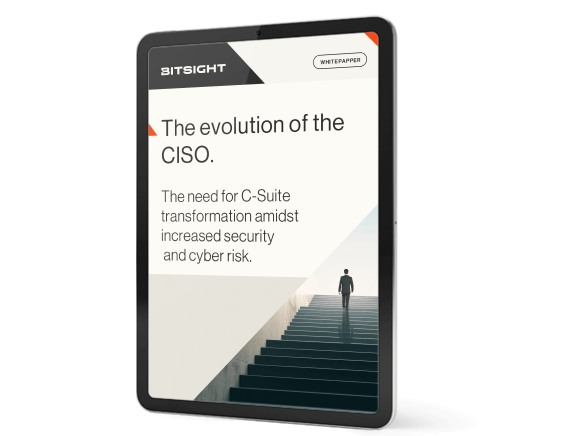In the midst of facilitating organization-wide digital transformation, the CISO also must undergo his or her own professional transformation to keep up with a world in serious need of cybersecurity leaders.

The role of the Chief Information Security Officer (CISO) or Security Leader has undergone a transformation as profound as the threats we face. Between new regulations such as SEC, NIS2, and DORA, the explosion of generative AI, and the rapidly expanding attack surface, the burden is now on cybersecurity leaders to not only protect the organization but build confidence with customers, regulators, board members, and other stakeholders.
The key to building trust? Storytelling.
Embracing the Role of the Chief Storytelling Officer
In today's complex cyber environment, data alone doesn't sway boards or spark organization-wide action. Stories do. They transform abstract risks into tangible scenarios, making the invisible, visible; the intangible, relatable—in a context that stakeholders, executives, customers, and investors understand.
As CISOs and security leaders, our task is manifold and very important to help educate around cyber risk. We are the key to decoding the complexities of cyber threats, weaving narratives that not only inform but compel action—and sometimes urgency too. We turn data points into meaningful information, allowing for decisions to be made based on facts, statistics, and insights. And we link compliance requirements into our roadmap for best practice cyber hygiene. This narrative approach isn't merely aesthetic; it's strategic, fostering a culture of security and a shared sense of purpose.
So how does the security leader transform into an effective chief storyteller?
Framing every conversation, every report, and every strategy in a storyline that provides insight, simplicity, and understanding. That is backed by metrics and facts to allow for informed decision making. It's about humanizing the cyber risks and illustrating the impact of action—or inaction—through relatable anecdotes and real-life examples.
It's how we articulate the narrative of risk and resilience, of challenge and opportunity. Through stories, we benchmark our cybersecurity posture, driving home the need for strategic investments in a language that resonates across the boardroom.
Telling Your Cybersecurity Story
To navigate this narrative-driven landscape, CISOs and security leaders need to speak business, not cyber. Just like we use dollars and euros to communicate costs, we use cyber risk and performance analytics to communicate risk.
Whether it’s about your organization or a vendor in your digital supply chain, you need a universal language to measure and communicate risk and performance. Many companies find that publicly disclosing independent benchmarking data is a highly effective way of communicating cybersecurity performance to shareholders and the broader marketplace. Security ratings are a perfect example—an objective way to tell your cybersecurity story that is becoming more and more relied upon by the capital markets as it brings legacy and trust to the conversation. In fact, Bitsight security ratings have been correlated to the likelihood of a cyber incident by a Marsh McLennan study.
Some examples of disclosing benchmarking data include:
- Equifax includes cybersecurity performance benchmarks in its Annual Security Report. Equifax focuses on its performance compared to peers in the Finance and Technology sectors, noting that its security capabilities “ranked in the top 1% of Technology companies and top 3% of Financial Services companies analyzed.”
- Darling Ingredients leverages cybersecurity performance benchmarks in its Annual ESG Report, describing its cyber program as “being in the top 10% of the Energy/Resource Industry.”
- Schneider Electric and AVEVA include cybersecurity performance benchmarks in their Annual Sustainability Report, describing their programs as being ranked “in the Top 25% in external ratings for Cybersecurity performance.”
With strict disclosure requirements from the SEC in the United States, and increased accountability of management under NIS2 in the European Union, the trend is clear: investors and regulators want more information about companies’ cybersecurity programs, and they are increasingly leveraging quantitative, objective data sets like Bitsight’s cybersecurity analytics to evaluate a company’s efforts.
So here's where the rubber meets the road. These are a few actionable recommendations to tell your cybersecurity story:
- Understand Your Audience: Tailor your stories to resonate with specific stakeholders. What motivates them? What fears do they harbor?
- Use Data Wisely: Let data support your narrative, not overshadow it. Use it to craft a storyline that's compelling and persuasive.
- Be Authentic: Authenticity strengthens your narrative. Share real challenges, lessons learned, and victories, however small.
- Leverage People, Process, and Technology: Streamline your workflows and use comprehensive cyber risk management tools like Bitsight for real-time insights and analytics. Let these tools inform your stories, providing evidence-based scenarios to back your strategies.
- Educate Continuously: Use your narratives to foster a culture of learning and adaptation, and a shared sense of responsibility. Cybersecurity isn't static; your stories shouldn't be either.
Shaping the Future of the CISO
The role of the CISO as the Chief Storytelling Officer is not just a title change—it's a paradigm shift. It's about leading with conviction, clarity, and, most importantly, a story that unites and inspires action.
The modern CISO must have the most reliable and intuitive set of tools at their fingertips to:
- Prioritize which issues should be addressed first
- Allocate resources, both financial and people, to the most meaningful areas
- Assess cybersecurity performance in context with industry standards and regulations
- Provide more visibility into the security posture and controls of third-party providers
- Make better decisions about internal security
At Bitsight, we're committed to equipping cybersecurity leaders with the insights and tools to craft these narratives, driving not just security, but transformation across your organization. Explore our solutions to get started.
The Evolution of the CISO
